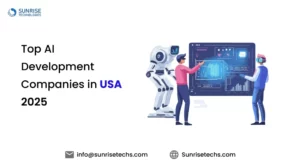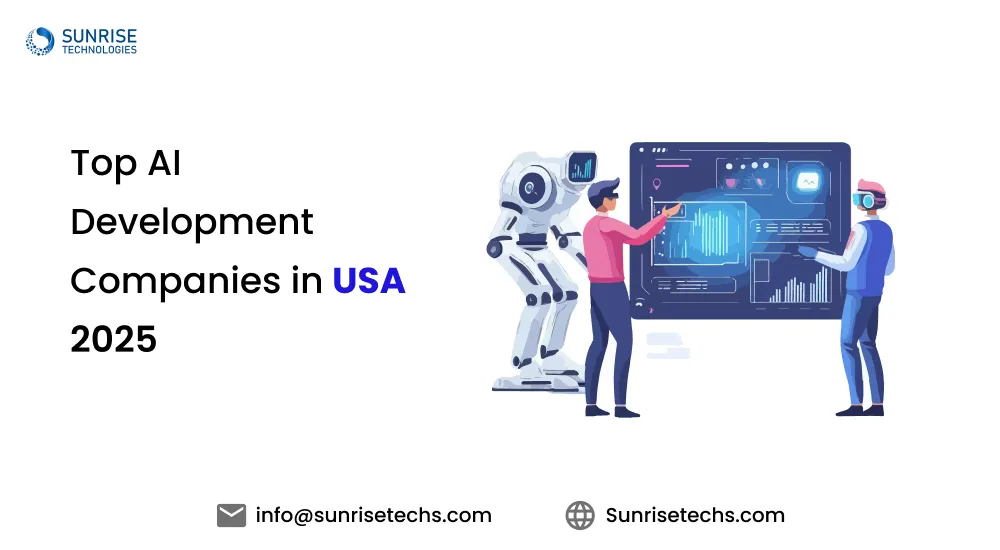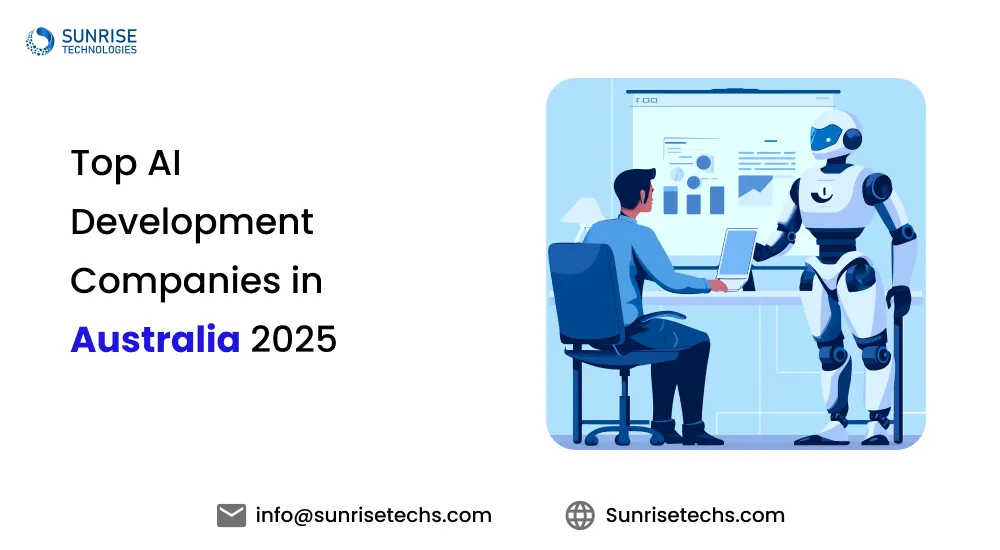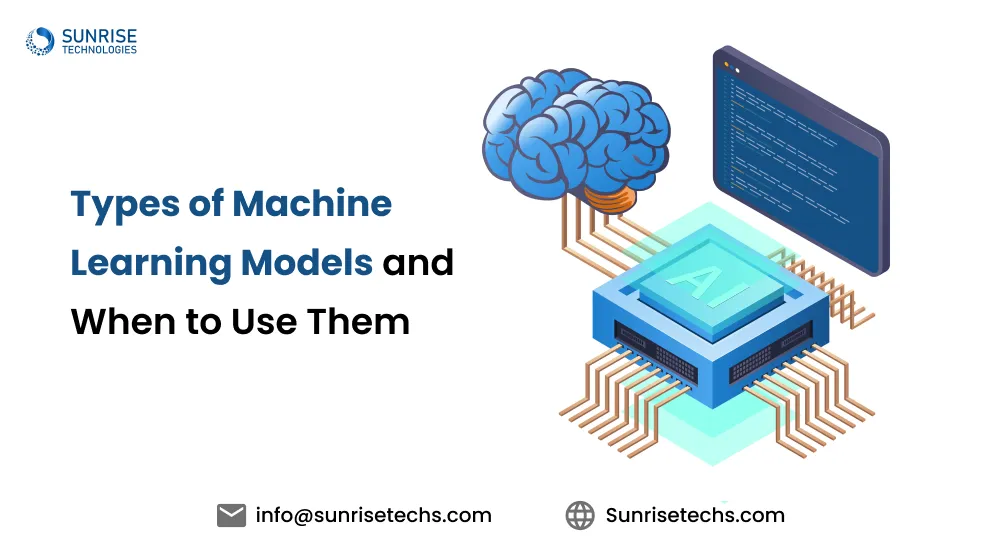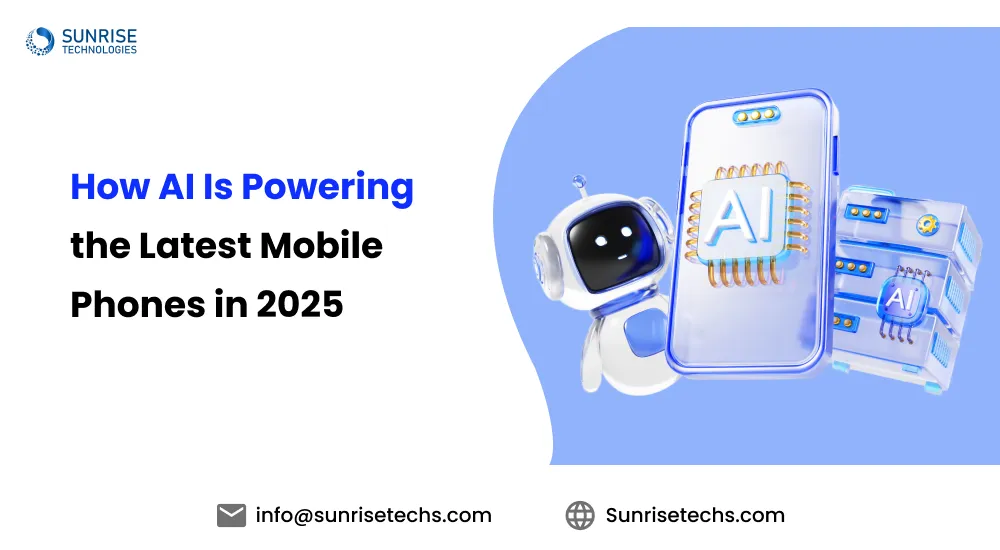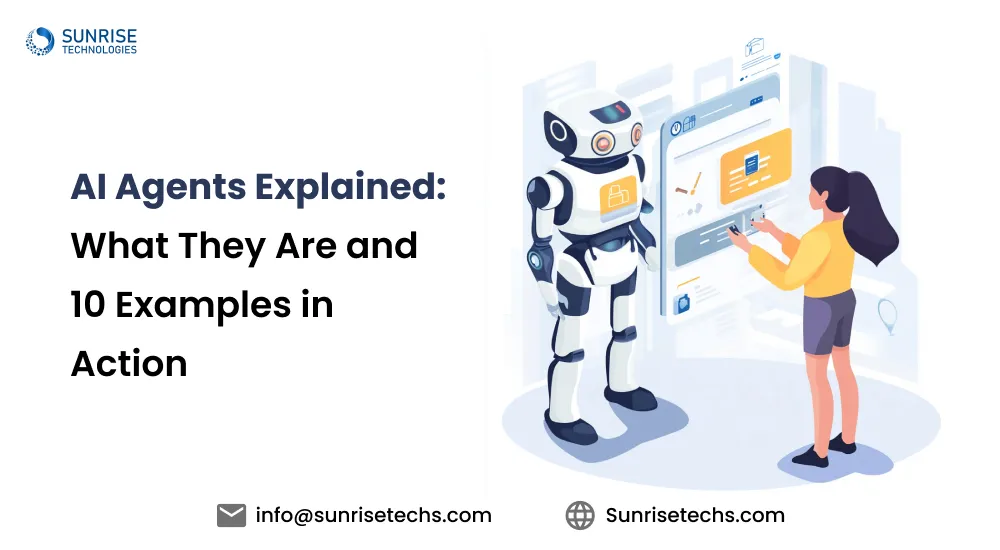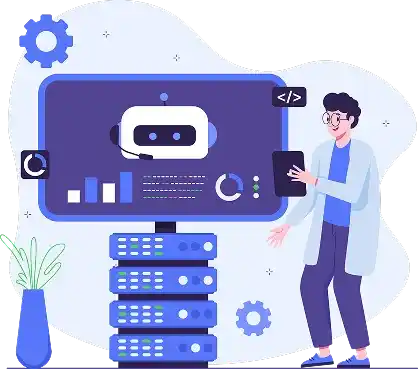How to Build an AI Model: A Beginner-Friendly Guide, 2025
May 21, 2025
AI is the engine driving innovation across industries. But what does it really take to build an AI model from scratch? If you’re curious, this guide is your roadmap. From chatbots that mimic human conversation to predictive systems that anticipate what users want before they click, artificial intelligence is revolutionizing how we interact with technology. It’s like training a transformer-based model to forecast stock market trends by analyzing terabytes of data, news articles, earnings reports, even Elon Musk’s tweets.
According to Statista, the global AI software market is forecast to grow rapidly in the coming years, reaching around $126 billion by 2025.
Welcome to “Beginner’s Guide to AI Model Development for Startups”, curating quality training data, fine-tuning pre-trained models, and deploying APIs that deliver results. You’ll also discover how reinforcement learning with human feedback (RLHF) is fixing chatbot meltdowns and enhancing real-world AI performance.
What is an AI Model?
An AI model is a mathematical framework trained on data to recognize patterns, make decisions, or generate outputs without explicit human programming. To build a AI model, you utilize algorithms like neural networks, decision trees, or transformers, which learn from historical or real-time data to perform tasks such as predictions, classifications, or content creation.
It’s built using machine learning or deep learning techniques and is trained on massive datasets so it can “learn” how to solve specific tasks like image recognition, language translation, customer support, or even medical diagnoses.
For example, when Netflix recommends your next binge-worthy series, or a website chatbot answers your late-night question like it’s been waiting all day for you, there’s an AI model quietly working in the background.
Different Classes of AI: From Smart Assistants to Superintelligence
AI actually comes in different flavors, depending on how smart it is and what it’s capable of doing. Some AIs help you pick your next song, while others aim to think like humans, and beyond. Let’s explore the main classes of AI, one step at a time:
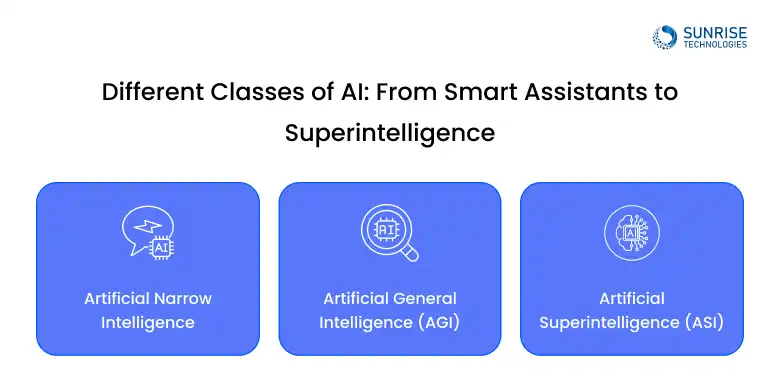
Artificial Narrow Intelligence (ANI) is even more specialized than regular Narrow AI. While Narrow AI excels at a specific task (like playing chess or recognizing faces), ANI might be incredibly good at one very specific aspect of that task.
Currently, most AI we interact with falls under the broader category of Narrow AI, with researchers constantly pushing the boundaries of specialization and efficiency within those narrow domains.
Example:
- An AI that can identify only one specific type of skin cancer in medical images with extremely high accuracy, but can't identify any other skin conditions or even other types of cancer.
- Another example could be a voice assistant that only understands and responds to a very limited set of commands in a specific dialect.
Artificial General Intelligence (AGI), sometimes referred to as Strong AI or human-level AI, is the hypothetical ability of an AI to understand, learn, and apply knowledge across a wide range of tasks, much like a human can.
- Learn new skills without extensive retraining for each one.
- Understand and reason about different subjects.
- Solve novel problems and adapt to unfamiliar situations.
- Exhibit common sense and potentially even creativity.
While current AI like large language models (LLMs) such as GPT-4 are impressive and can perform many tasks, they still lack true understanding and generalizability. They excel at what they’ve been trained on but struggle significantly outside those boundaries. AGI remains a significant research goal.
Examples: (It’s just theoretical.)
- An AI that can learn to play any game at a human expert level after understanding the rules.
- An AI that can understand complex texts, summarize them accurately, and then use that knowledge to answer questions on a completely different topic.
Artificial Superintelligence (ASI) is a hypothetical stage of AI that would surpass human intelligence in virtually all cognitive domains. An ASI would be vastly smarter than the best human brains in every field, including scientific creativity, general wisdom, and problem-solving.
- Solve problems that are currently considered unsolvable by humanity.
- Make scientific and technological breakthroughs at an unprecedented rate.
- Potentially understand and manipulate the world in ways we cannot even comprehend.
Examples:
An AI that could cure all known diseases in a matter of days. (It’s just theoretical.)The development of ASI raises significant ethical and philosophical questions about control, safety, and the potential impact on humanity.
The 5-Layer AI Model: A Quick Look
The 5-Layer Model offers a straightforward way to visualize how AI operates, depicting the step-by-step conversion of data into intelligent behavior.
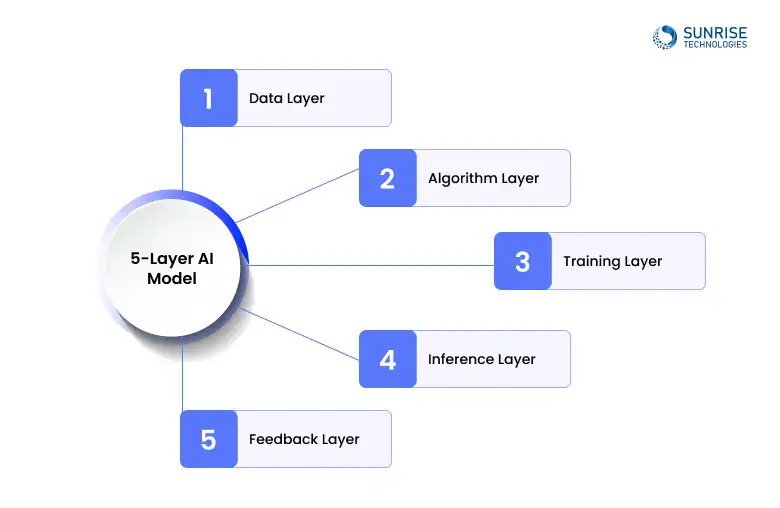
At the very base of any AI model is data. This layer is all about collecting and organizing the raw information your system will learn from. Without clean, high-quality data, your AI won’t have anything reliable to learn from, so this layer is absolutely crucial.
Once your data is in place, the next layer introduces the brains behind the operation: algorithms. These are mathematical models that help the AI understand patterns and relationships within the data. From simple decision trees to complex neural networks and deep learning architectures, this is where the model’s intelligence starts forming.
Your AI model now enters the learning phase. Using historical or labeled data, the system trains itself by adjusting internal parameters to minimize errors. The more relevant and diverse the training data, the more accurate your AI will become. However, this stage also demands significant computing power and time.
Once trained, your AI model is ready for action. The inference layer is where the system uses its learned intelligence to make real-world decisions. This layer is all about performance. It needs to be fast, reliable, and scalable, especially if you’re deploying it in high-traffic environments like hospitals, banks, or retail platforms.
Even after deployment, the journey isn’t over. The feedback layer allows the AI model to continuously improve by learning from new data, user interactions, and mistakes. This feedback helps the system stay updated and avoid performance degradation over time. It’s what turns a good AI into a great, adaptive one.
Step-by-Step Guide to Build an AI Model: Custom AI Model Development
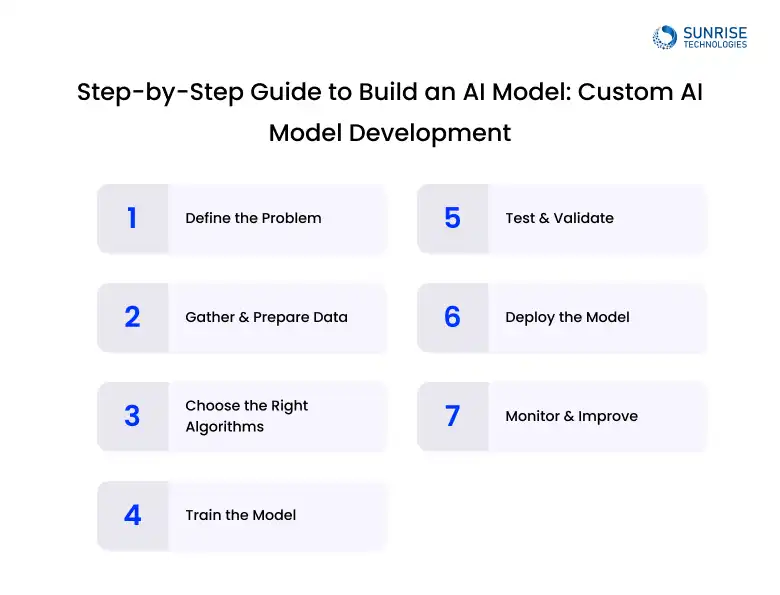
Custom AI model development is a strategic, multi-stage process that involves designing, training, and deploying an artificial intelligence system tailored to solve a specific business or user problem and it’s all about aligning AI capabilities with real-world goals.
Before you create an AI model, you need clarity. What’s the goal? Is it forecasting sales, personalizing recommendations, or detecting fraud? Getting this step right ensures everything else flows smoothly. Think of it as defining the “why” behind your AI.
Once your problem is set, it’s time to gather the data your AI will learn from. This could come from your CRM, sensors, surveys, or third-party APIs. Clean it up, remove the junk, and structure it properly, because good data = good results.
Now that your data is polished, select the AI/ML model that best suits your task. Regression? Decision trees? Deep neural nets? Don’t worry, you don’t have to invent a new one. Just pick the best fit based on complexity and outcome.
This is where your AI learns from your data. You’ll feed it examples, adjust parameters, and keep an eye on how well it performs. It’s a bit like coaching a new employee, lots of trial and error, but crucial for long-term success.
Before letting your model out in the wild, you need to test it. Use separate validation datasets to check if it’s performing accurately and fairly. Look at accuracy, precision, recall, those fancy metrics that tell you it’s doing its job.
Once your model passes all the checks, it’s time to go live! Whether it’s inside a mobile app, connected to a chatbot, or integrated into a backend system, deployment is where your AI starts making real-time decisions.
Even after deployment, AI needs maintenance. You’ll monitor its performance, feed it new data, and make tweaks. The goal is to keep it sharp, accurate, and aligned with your evolving business needs.
Develop your own AI model that understands, predicts, and delivers results like never before.
AI Frameworks & Tools to build an AI Model
When it comes to building powerful AI models, having the right frameworks and tools is like having the right gear for a high-stakes mission. In technical terms, AI frameworks are software libraries and platforms that provide developers with pre-built components to design, train, and deploy machine learning and deep learning models efficiently.
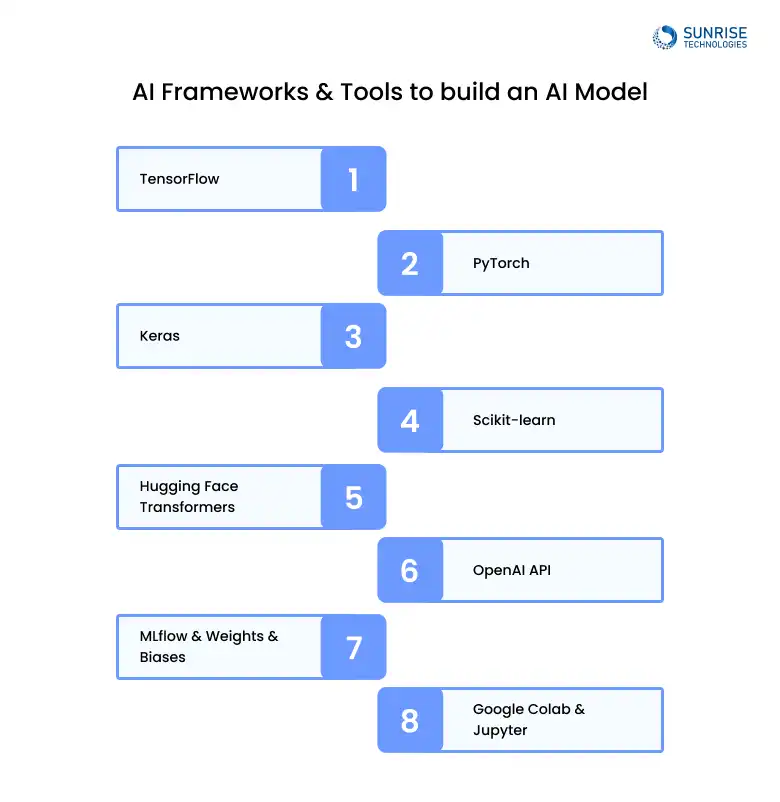
- 1. TensorFlow: Developed by Google, TensorFlow is one of the most popular open-source frameworks for deep learning. It's powerful, production-ready, and great for building everything from chatbots to image classifiers. Bonus: it plays well with mobile and edge devices.
- 2. PyTorch Loved by the research and dev community alike, PyTorch (from Meta) offers a more Pythonic, flexible approach to model building. If you're into fast experimentation and super readable code, PyTorch is your go-to.
- 3. Keras Built on top of TensorFlow, Keras is like the user-friendly interface for neural networks. Great for beginners or anyone who wants to prototype quickly without diving deep into the math.
- 4. Scikit-learn If you’re focusing more on traditional machine learning like regression, classification, or clustering, Scikit-learn is a lightweight, easy-to-use toolkit that gets the job done fast.
- 5. Hugging Face Transformers Want to build a chatbot, translation engine, or sentiment analyzer? Hugging Face offers pre-trained state-of-the-art NLP models (like BERT, GPT, RoBERTa) that save you tons of time.
- 6. OpenAI API Why reinvent the wheel? Tap into OpenAI’s GPT-4 and Codex through APIs to embed conversational intelligence into your product, no heavy lifting required.
- 7. MLflow & Weights & Biases These tools help you manage experiments, track metrics, version datasets, and optimize models like a boss. Super helpful when you're working in teams or dealing with multiple model iterations.
- 8. Google Colab & Jupyter Both are awesome for prototyping, running quick experiments, and sharing your AI work. Bonus: Google Colab comes with free GPUs!
Cost of AI Model Development: What Does It Really Take?
In simple terms, AI model development cost refers to the total investment required to research, design, build, train, deploy, and maintain a custom artificial intelligence model tailored for a specific business or use case. This includes expenses like data collection, algorithm training, infrastructure, testing, and ongoing optimization.
Let’s break down some real factors that impact AI Models
- Type of AI: Machine learning model vs. deep learning neural net.
- Data: Do you already have it? Or need to source, clean, and label it?
- Infrastructure: Cloud GPU usage (like AWS or GCP) isn’t cheap.
- Talent: Hiring AI engineers, data scientists, and domain experts can seriously add up.
- Time: The more iterative the model, the more billable hours it racks up.
And don’t forget the hidden costs, like compliance (HIPAA, GDPR), security layers, or ongoing model retraining.
Always set aside 20–30% of your total AI budget for post-launch maintenance, monitoring, and upgrades. AI doesn’t sleep, but it does need attention!
AI model development steps for product integration:
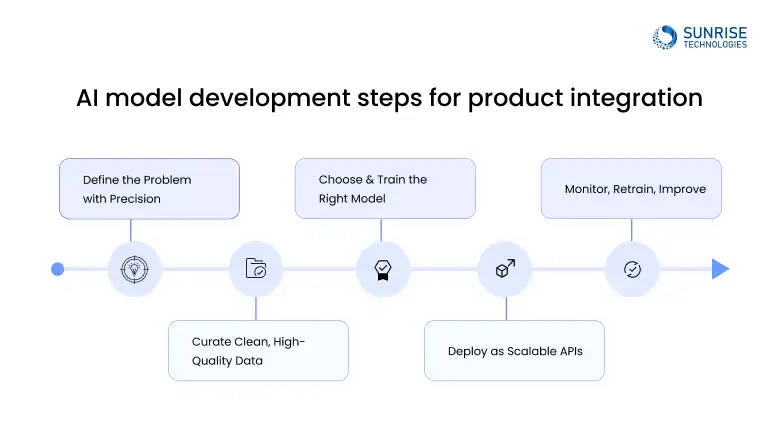
Every successful AI initiative starts with a crystal-clear problem statement. Ask yourself:
- What pain point are we solving?
- Who benefits from this AI solution?
- How will success be measured?
Whether it’s personalizing content, automating customer support, or predicting churn, a well-defined problem sets the tone for a focused and effective AI integration.
Data is the backbone of any AI model. To build a model that delivers real value, you’ll need:
- Relevant datasets (internal or external)
- Annotated/labelled data (supervised learning)
- Preprocessing (handling missing values, normalization, etc.)
Based on your use case, choose the right model architecture, be it CNNs for image data, LSTMs for sequences, or Transformers for NLP. You can:
- Train from scratch (if you have massive data)
- Tools like TensorFlow, PyTorch, and Hugging Face make model development more accessible than ever.
- Preprocessing (handling missing values, normalization, etc.)
Once trained and tested, your model needs to meet the real world.
- Deploy your AI model via APIs so it can be easily consumed by your product or external apps. You can use:
- FastAPI or Flask for lightweight API development
- Docker for containerization
- TensorFlow Serving or TorchServe for production-grade deployment
AI models are not “set-it-and-forget-it” tools. Post-deployment, it’s crucial to:
- Monitor performance metrics
- Detect model drift
- Retrain using fresh data
We can help you map one out based on your goals, industry, and desired AI capabilities.
Real-World Examples from Fortune 500 Companies
Amazon is a global e-commerce giant focused on online retail, cloud computing (AWS), digital streaming, and artificial intelligence. A key area is personalizing the shopping experience for millions of customers.
- AI Model Focus: They develop sophisticated deep learning models for product recommendations.
- Technologies Used: Collaborative Filtering Neural Networks (CFN), Graph Neural Networks (GNNs), embedding learning, reinforcement learning.
Amazon’s recommendation engine uses vast user data like purchases, browsing, and ratings, to predict what you’ll want next. This data is continuously collected, processed, and used to train ML models on AWS. Embedding learning captures user-product relationships, while reinforcement learning adapts suggestions based on feedback. The system evolves in real time, delivering hyper-personalized product recommendations across the platform.
Netflix is a global streaming leader, serving 250M+ subscribers with personalized TV shows, movies, and documentaries. Its AI-driven interface keeps users engaged by predicting what they’ll watch next.
- AI Model Focus: Hyper-personalized content recommendations using hybrid filtering.
- Technologies Used: Matrix Factorization (for user-movie latent features), Deep Learning Models (Transformer-based sequence modeling for binge patterns), Real-Time A/B Testing Frameworks
Netflix’s AI ingests terabytes of data, viewing history, pause/rewind behavior, and even thumbnail clicks to train models that predict engagement. The NRE combines collaborative filtering (matching users with similar tastes) and content-based filtering (analyzing genre, actors, etc.) using TensorFlow and Apache Flink for real-time processing. For instance, if you binge horror films, the AI uses graph neural networks (GNNs) to map connections between niche subgenres (e.g., “Korean psychological thrillers”) and surfaces hidden gems. The system updates hourly, leveraging reinforcement learning to refine suggestions based on what you actually watch vs. skip.
JPMorgan Chase, a global leader in investment banking, financial services, and asset management, uses AI to combat fraud in financial transactions, ensuring security and trust across its banking operations.
- AI Model Focus: Anomaly Detection, Fraud Detection, Predictive Analytics
- Technologies Used: Random Forest, Support Vector Machines (SVM), Neural Networks, Natural Language Processing (NLP)
JPMorgan Chase leverages sophisticated AI models to detect and prevent fraud in real-time financial transactions. The models use techniques like Random Forests and Support Vector Machines (SVM) to classify and detect suspicious activities. Additionally, deep learning models and NLP algorithms are employed to assess the sentiment and context of customer communications, improving fraud detection further. Over time, the AI systems continue to learn from new transaction data, enhancing their accuracy and ability to predict fraudulent activities, ensuring a secure financial ecosystem for both the bank and its customers.
Spotify dominates music streaming with 600M+ users. Its “Discover Weekly” playlist uses AI to introduce listeners to new artists, driving engagement and retention.
- AI Model Focus: Music recommendation using audio + user behavior analysis.
- Technologies Used: Natural Language Processing (NLP), Convolutional Neural Networks (CNNs), Reinforcement Learning (RL)
Spotify’s AI analyzes three key data streams:
- Audio Features: CNNs process raw audio (BPM, key, timbre) to classify tracks.
- User Context: Collaborative filtering maps listening habits (e.g., "yoga playlists at 7 AM").
- Cultural Trends:NLP scans blogs and social media to predict viral hits.
The “BaRT” model (Bandit for Recommendations and Trends) uses Thompson Sampling (a RL technique) to balance exploration (new artists) vs. exploitation (known favorites). For example, if you stream Taylor Swift, the AI cross-references Word2Vec embeddings of fan forums to suggest Phoebe Bridgers. Training occurs on Google Cloud TPUs, with latency kept under 100ms using TensorFlow Extended (TFX) pipelines.
Create with Sunrise Technologies: Your Partner in Custom AI Model Development
“Create with Sunrise Technologies” isn’t just a tagline, it’s your gateway to building smart, scalable AI solutions that actually work for your business. Professionally speaking, it refers to partnering with Sunrise Technologies, a top AI development company, to co-develop custom AI models tailored to your industry, goals, and data ecosystem.
We help you:
- Identify the right AI architecture (ML, DL, NLP, you name it)
- Choose the best tools and frameworks (TensorFlow, PyTorch, LangChain… we speak fluent AI)
- Handle all the heavy lifting, data preprocessing, model training, testing, and even compliance checks
- Stay by your side post-launch to keep your AI evolving and accurate
The journey from idea to implementation doesn’t have to be overwhelming, especially when you have the right partner by your side. As industries shift toward machine learning-driven ecosystems, partnering with the top custom AI development company ensures your solution is scalable, secure, and performance-optimized.
At Sunrise Technologies, we go beyond code. From neural network architecture design and data pipeline engineering to model fine-tuning, hyperparameter optimization, and real-time inference integration, we deliver end-to-end AI development solutions that are robust and production-ready.
If you’re ready to explore top AI model development tailored to your business case, whether it’s NLP , computer vision, or recommendation systems, let Sunrise Technologies turn your AI idea into a tech-powered reality.
Got data? We’ve got the solutions to make it real. Custom-built AI models tailored to your business needs.
Begin by understanding the basics of AI, choose a simple problem to solve, gather relevant data, and use beginner-friendly tools like AutoML platforms.
The steps include defining the problem, collecting and preparing data, choosing the right tools, building and training the model, evaluating its performance, and deploying it.
Tools like TensorFlow, PyTorch, and cloud platforms like AWS and Google Cloud are popular choices for AI development.
The amount of data required varies based on the complexity of the problem and the model used; however, more data generally leads to better performance.
Python is the most widely used language in AI development due to its simplicity and the availability of numerous libraries.
Sam is a chartered professional engineer with over 15 years of extensive experience in the software technology space. Over the years, Sam has held the position of Chief Technology Consultant for tech companies both in Australia and abroad before establishing his own software consulting firm in Sydney, Australia. In his current role, he manages a large team of developers and engineers across Australia and internationally, dedicated to delivering the best in software technology.


